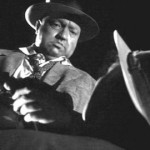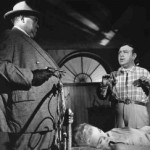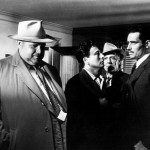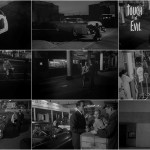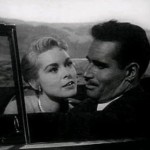To repeat once more some of the micro-review I wrote in my Top 20 Movies:
That Orson Welles was a genius was beyond doubt, and here he shows why yet again, as an actor playing the odious and corrupt Mexican police chief, and director.
My third review of a Welles movie today, and this one has him once again acting and directing, and in both showing a measure of his genius. But for all the fact that his Mexican cop Hank Quinlan oozes sleaze from every pore, a performance so deliciously evil that you can’t imagine anyone else coming close to delivering what it takes, it is Welles the director that captures the imagination here.
Even if you disregard the rest of the movie in its entirety, the opening shot, done in a single take for about 4 minutes straight, is beyond compare, unquestionably among the greatest scenes ever shot! Put like this it sounds prosaic, but it’s sheer poetry. Like the most wonderful things it looks incredibly simple but must have been hellishly complex to construct:
It begins with a bomb being set by a young man, whose face we don’t see. He places the bomb in the boot of a parked car shortly before the occupants – an ageing man and his young female companion, get in and start out. The tracking shot follows them round the block, but then pulls up, round the corner and down to follow Vargas and his new wife Susie (a horribly miscast and blackened Charlton Heston, and Janet Leigh) as they walk down a lively street, avoiding all the people, animals and festivities along the way. The car weaves past them, then falls behind, before going forwards to the frontier post, the Mexican border with the USA. The couple keep walking and strike up a conversation with the border guards before walking on. The woman in the car is complaining about hearing a ticking noise. Heston tells Leigh he has not kissed her for a week, then takes her in his arms…. just as the bomb explodes, killing both occupants.
Thus begins this noirish tale of revenge and deceit, which continues at a rip-roaring pace and with the help of cameos from a brilliant cast that includes Zsa Zsa Gabor, Joseph Cotten and Marlene Dietrich as a gypsy. What brought the cast together is recounted by Janet Leigh and quoted on Wikipedia. This quote reveals to me the value of Welles’s theatrical background:
“It started with rehearsals. We rehearsed two weeks prior to shooting, which was unusual. We rewrote most of the dialogue, all of us, which was also unusual, and Mr. Welles always wanted our input. It was a collective effort, and there was such a surge of participation, of creativity, of energy. You could feel the pulse growing as we rehearsed. You felt you were inventing something as you went along. Mr. Welles wanted to seize every moment. He didn’t want one bland moment. He made you feel you were involved in a wonderful event that was happening before your eyes.”
The evidence is plain to see – the rat-a-tat overlapping dialogue is a joy to behold as the acting fireworks crackle and pop.
Put simply, while Welles may have had his indulgent moments, when he was on form there was simply no-one better at realising a vision and packing a movie with moments that leave you awe struck and which have influenced a stack of movie directors ever since. That is genius!


